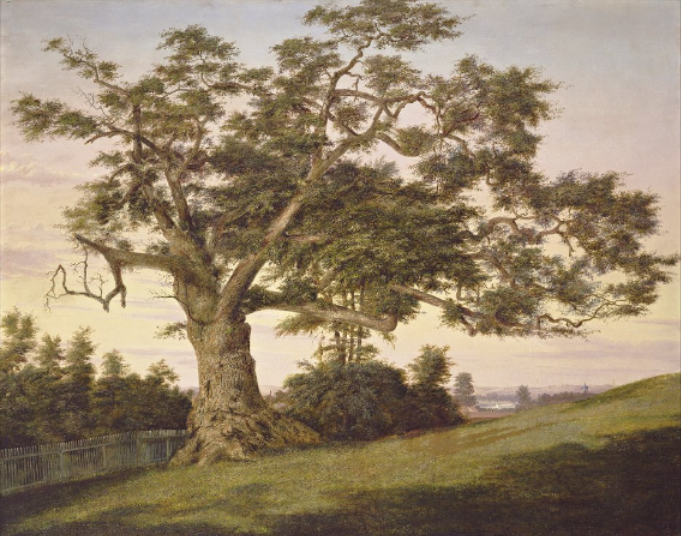by Laura Krenicki
William J. Johnston Middle School, Colchester
TEACHER'S SNAPSHOT
Topics:
Art, Colonial History, Politics & Government
Grade:
Grade 5
Historical Background
As a colony of England and English rule, Connecticut originally did not have any rights to govern themselves or even to make local laws. In 1662, King Charles II wrote a charter granting Connecticut the right to elect local leaders and even to create laws. The “Connecticut Charter” became an issue when King Charles II died and his brother, James II became the next king. James II didn’t want the Connecticut colony to have that much autonomy, so in 1667 he sent an ambassador, Sir Edmond Andros, to recall the charter.
During an interesting turn of events, in which colonist leaders and Andros met to debate the charter, the candles in the room suddenly went out. When order was restored, the charter, which had been on the table between the parties, was missing. It had been hidden in the trunk of a white oak tree so that it would be safe from Andros.
The Charter Oak became a symbol of American independence. Today, the image of the Charter Oak is commemorated on the Connecticut state quarter.
D1: Potential Compelling Question
D1: POTENTIAL SUPPORTING QUESTIONS
- What is the significance of Connecticut’s contribution to America’s story?
- How were the beginnings of a national identity created by colonies with very different purposes and varied governmental and economic systems?
D2: TOOL KIT

Charles De Wolf Brownell, View of the Charter Oak, Hartford, oil on canvas – The Wadsworth Atheneum.
D3: INQUIRY ACTIVITY
Write the following question-focus statement on the board:
The legend of the Charter Oak is the story of our independence.
Have students generate questions, in small groups, to reflect on this statement. Narrow the list down to closed questions (ones that have a definite answer) and open questions (inquiry). Have students chose one or two to research.
Have students consider:
- How might the history of the United States have turned out if the charter had not been taken?
- Why did James II decide to take the charter back after his brother, Charles II, had issued it to the colonies?
D4: COMMUNICATING CONCLUSIONS
- Have students take the sides of the colonists and the English ambassadors and create a reenactment of the events. What would have been discussed? What would have happened if the ambassadors had taken the charter?
- The Connecticut state flag does not contain the Charter Oak. Create a new design for the state flag that would include this iconic image.
ADDITIONAL RESOURCES
Place to GO
At the corner of today’s Charter Oak Avenue and Charter Oak Place in Hartford, the Charter Oak Monument marks the location of the legendary Charter Oak tree.
Things To DO
Visit Connecticut’s Old State House or the “Liberties and Legend” exhibit at the Connecticut State Library’s Museum of Connecticut History.
Websites to VISIT
Articles to READ
ConnecticutHistory.org: Connecticut’s “The Legend of the Charter Oak” by Erin Strogoff for Your Public Media
HartfordHistory.net: What is the Charter Oak?



